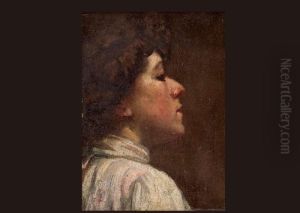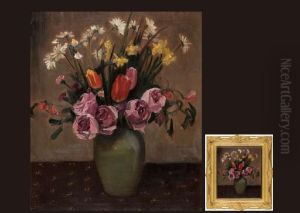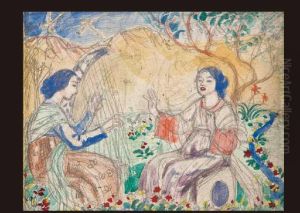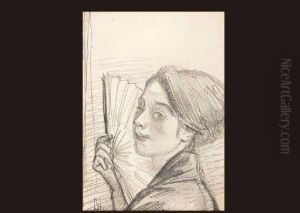Takeji Fujishima Paintings
Takeji Fujishima was a Japanese painter who played a significant role in the development of Western-style painting (Yōga) in Japan. Born on October 15, 1867, in Kagoshima, Japan, Fujishima was part of the Meiji period, a time when Japan was rapidly modernizing and opening up to Western influences after more than two centuries of relative isolation under the Tokugawa shogunate.
Fujishima initially studied traditional Japanese painting (Nihonga) before shifting his focus to Western-style painting. He moved to Tokyo and became a disciple of Koyama Shotaro, a prominent figure in the Western-style painting movement in Japan. Fujishima's talent was recognized early on, and he was one of the first Japanese artists to be sent to Europe to study art, specifically in France, which was a center for artistic innovation at the time.
He studied at the prestigious École des Beaux-Arts in Paris, where he was exposed to various Western art movements, including Impressionism and Post-Impressionism. This exposure greatly influenced his style and technique. After returning to Japan, Fujishima became a significant advocate for Yōga and worked to incorporate the techniques and aesthetics he had learned in Europe into his work.
Throughout his career, Fujishima held several teaching positions and was instrumental in the education of future generations of Japanese Western-style painters. His works often depicted landscapes, portraits, and nudes, and he is particularly noted for his skillful use of light and color, which reflected his training in French academic painting.
Fujishima's contributions to the art world were not limited to his paintings; he also played a crucial role in the establishment of art institutions in Japan. He was a founding member of the Taiheiyogakai (Pacific Painting Association), which aimed to promote Western-style painting in Japan.
Takeji Fujishima's impact on the Japanese art scene was profound, bridging the gap between traditional Japanese aesthetics and Western art principles. He passed away on February 19, 1943, leaving behind a legacy as one of the pioneers of Western-style painting in Japan. His works continue to be celebrated and studied for their unique blend of Eastern and Western artistic traditions.



